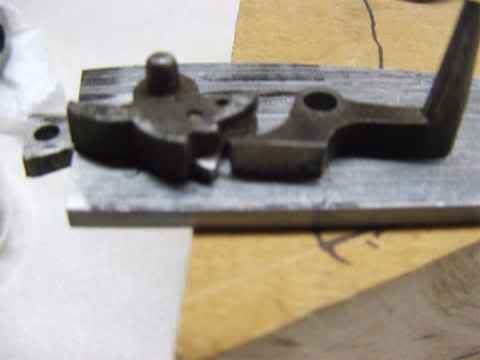Do you have access to another percussion or flint lock that has a fly in it? That would be the most help to you understanding how it works.
The fly helps the sear pass over the half cock notch, but is lifted out of the way as you cock the hammer back so that the sear can ENTER the half cock notch. It is a " one-way door", so to speak. It lets the sear into the half cock notch when the hammer is being cocked, but prevents the sear from entering the notch then the hammer is falling.
Normally, the tumbler has a recessed area into which the "fly" is set. Because of how the fly works, there is no need to cut away any portion of the half cock notch.
Here's a picture from Bob Spenser's Black Powder Notebook that shows the inside of a percussion lock with the fly pointed out. You can see it sets in a triangular shaped groove in the tumbler, only slightly wider than the fly. This allows the fly to move enough to permit the sear to enter the half cock notch when the hammer is cocked. If you look closely at the picture you can see the bottom end of the fly will prevent the nose of the sear from entering the half-cock notch when the hammer is falling.
http://members.aye.net/~bspen/percterm.html






